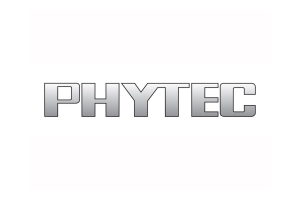Fire protection for electric vehicles
How safe are solid-state batteries really?
Battery fires are rare but can be very serious. A frequently asked question is whether the coming solid-state battery technology will be safer and whether this will eliminate the need for thermal management and fire protection materials.
Thermal runaway and the associated battery fires are a critical problem for customers, battery developers and electric vehicle manufacturers. But what changes with the use of solid-state batteries?
Are solid-state batteries safer?
At first glance, solid-state batteries offer several safety advantages. They eliminate the need for a flammable liquid electrolyte and can replace it with a non-flammable solid-state electrolyte. They also tend to have a wider operating temperature window, making the occurrence of thermal runaway due to cell overheating less likely. The heat generated by external heating failures is also usually lower.
But there are other aspects to consider. The term »solid-state battery« refers to a variety of battery technologies. In some cases, the battery still uses a liquid component for ion exchange (semi-solid-state), meaning there is still a volatile component present. Some polymer solid-state electrolytes are not completely flammable, and any electrolyte can melt if the system gets hot enough.
In 2022, for example, Paris transport authorities temporarily withdrew 149 electric buses from service after two separate bus fires. The cells used here are reportedly batteries with an LFP cathode, a Li-metal anode and a solid-state polymer electrolyte. The supplier describes its batteries as »completely solid, with no liquid components, no nickel and no cobalt«.
Another example comes from a simulation-based research study conducted by Sandia National Laboratories in 2022 (Hewson et. al., Joule, Vol.6, Issue 4, 742-755), which compared the safety of a pure solid-state battery, a solid-state battery with liquid electrolyte in the cathode, and a conventional liquid-based Li-ion battery.
The study found that a solid-state battery with a small amount of liquid electrolyte generated less heat than a typical Li-ion battery but more than a pure solid-state battery in the event of a failure due to external heating. In the event of a short circuit, the heat released was only dependent on the cell capacity. Since solid-state batteries can have a higher energy density, more heat could be generated. For normal Li-ion batteries, one speaks of typical thermal breakdown temperatures of about 1000 to 1200 °C. In some scenarios in this study, the temperature rise of solid-state batteries reached almost 1800°C.
The development of solid-state batteries is still ongoing, but the conclusion is that solid-state batteries could be safer in most cases. Nevertheless, no battery system will be 100% safe. Therefore, thermal management and fire protection materials will always be needed to retard the spread of fire outside the battery.
Material solutions for fire protection
The fire protection materials used for solid-state batteries are broadly similar to those used for conventional Li-ion batteries, although the form factor of the cells (cylindrical, prismatic, pouch) and the overall design of the battery will have a greater influence on the choice of material.
Materials commonly used today for passive fire protection include mica films, ceramic mats, encapsulating foams and fire retardant coatings. Aerogels are gaining ground in the market, and options such as intumescent coatings and phase change materials are attracting increasing interest.
Many of these materials would struggle to cope with temperatures above 1500 °C. Nevertheless, the goal is not necessarily to stop propagation completely, but to delay it as long as possible. In addition to high-temperature performance, these materials increasingly have to fulfil other functions, such as adaptability to the cells, compression performance and cost. The rapidly growing electric vehicle market, with an increased focus on fire safety, will provide a wide range of opportunities for fire protection materials that are not displaced by alternative battery technologies such as solid-state batteries.
IDTechEx research reports on solid-state batteries and batteries for e-vehicles
The findings described here are based on two IDTEchEx reports:
The IDTechEx report »Solid-state and polymer batteries 2023-2033: technology, forecasts, players« looks at the technologies, players, safety and acceptance of solid-state batteries. It includes technology benchmarking and analysis, market assessment and forecasting, tracking and evaluation of player activities, and supply chain setup and security.
The report »Fire Protection Materials for Electric Vehicle Batteries 2023-2033« looks at the materials used to prevent or delay the propagation of thermal runaway in EV battery packs. It provides material benchmarking, market player adoption, pricing and forecasts for various fire protection material categories.
More information on these reports.







